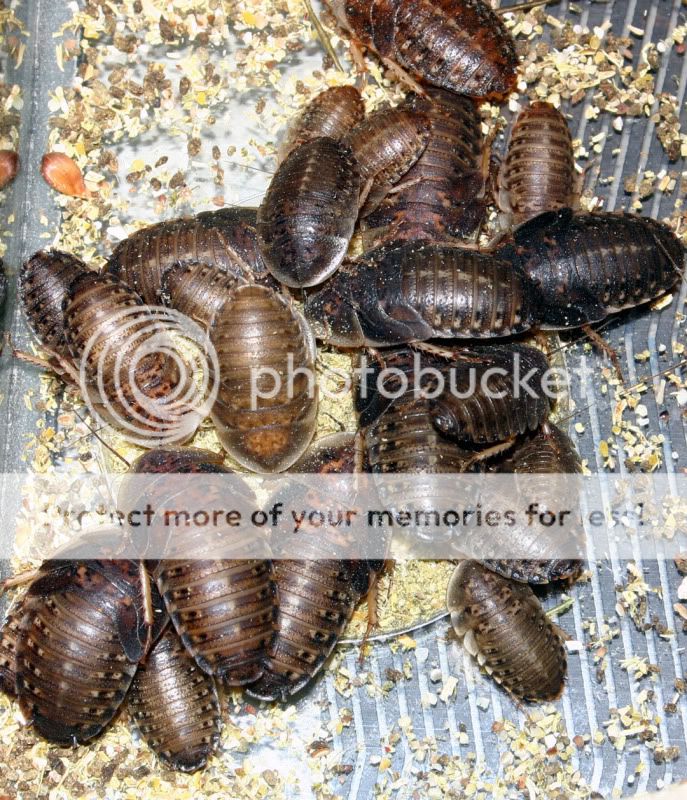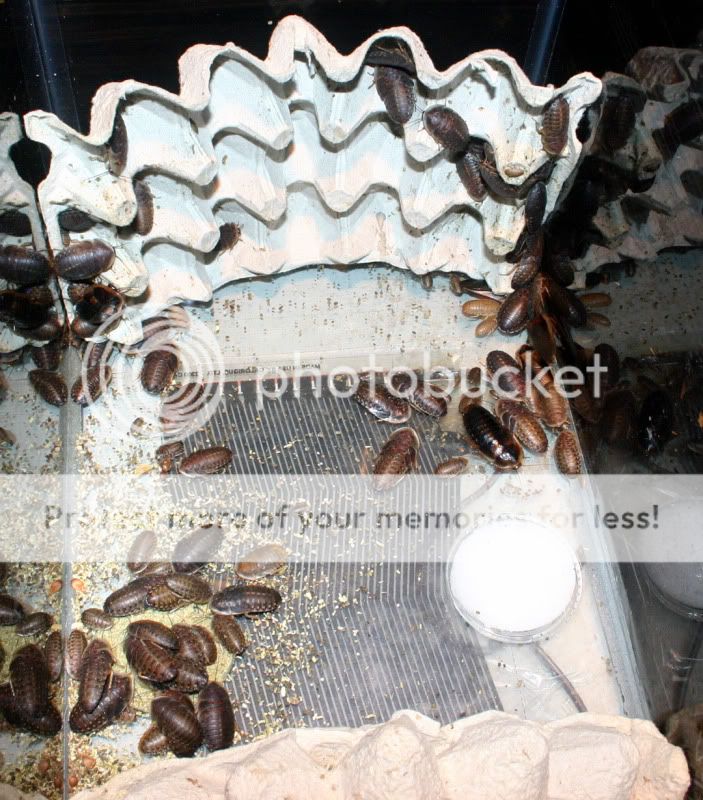QuioteCham
New Member
I bought two colonies of dubias about a week ago. They have a nice 25 gallon tank with screen lid. I provide the wet, hight protein catfood, fish flakes, leafy dark greens and carrots, plus a water dish with a sponge. They are kept in darkness, prettywarm- with egg crate and paper towl rolls for hiding places.
Questions: I never see them eat or near any of the food/ water. Sounds dumb, but how do I know if they are getting the nutritional value needed? How long until they start producing eggs/offspring? whats a good number to get the colony up to in population size before I can start "harvesting" for my zards (I'm feeding several Panther chams, chinese water dragons and beardies). Right now, I think theres about 100 roaches all together including adults, nymphs, etc (This is the 2 colonies combined). Is it safe to combine colonies? (I assume so since there has been no dubia massacre warfare going on that I've seen).
I figure I'm not terrible at this since no one in there is dead yet after a week, but they are roaches- they are said to be immortal during a nuclear explosion. Please let me know if theres anything im missing or need. I got there diet info from a roach vendor site, but if theres anything better or also good for them please let me know. Thanks all!
Questions: I never see them eat or near any of the food/ water. Sounds dumb, but how do I know if they are getting the nutritional value needed? How long until they start producing eggs/offspring? whats a good number to get the colony up to in population size before I can start "harvesting" for my zards (I'm feeding several Panther chams, chinese water dragons and beardies). Right now, I think theres about 100 roaches all together including adults, nymphs, etc (This is the 2 colonies combined). Is it safe to combine colonies? (I assume so since there has been no dubia massacre warfare going on that I've seen).
I figure I'm not terrible at this since no one in there is dead yet after a week, but they are roaches- they are said to be immortal during a nuclear explosion. Please let me know if theres anything im missing or need. I got there diet info from a roach vendor site, but if theres anything better or also good for them please let me know. Thanks all!







